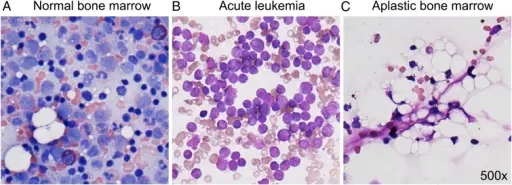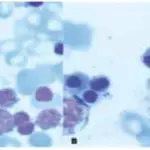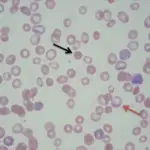Aplastic anemia is a disorder of marrow failure related to marrow hypoplasia and pancytopenia.
What is the Pathology of Aplastic Anemia?
The pathology of aplastic anemia is:
-Etiology: The cause of aplastic anemia is acquired or idiopathic.
-Genes involved: RMRP gene, TERC, and TERT genes
-Pathogenesis: The sequence of events that lead to aplastic anemia is not fully understood and is believed to result commonly from suppression of stem cell role through the activated T cells.
-Morphology: Possible rashes.
-Histology: The histology associated with aplastic anemia shows devoid of hematopoietic cells.
How does Aplastic Anemia Present?
Patients with aplastic anemia typically either gender present at an age range of any age. The symptoms, features, and clinical findings associated with aplastic anemia include weakness, pallor, dyspnea, petechiae, ecchymoses, chills, and fever.
How is Aplastic Anemia Diagnosed?
Aplastic anemia is diagnosed through the clinical presentation, laboratory studies- scrutiny of bone marrow biopsy and peripheral blood indicates hypocellular.
How is Aplastic Anemia Treated?
Aplastic anemia is treated through supportive care, blood transfusion, hematopoietic cell transplantation (HCT), or immunosuppressive therapy.
What is the Prognosis of Aplastic Anemia?
The prognosis of aplastic anemia is fair. It is unpredictable with spontaneous remission in idiopathic causes.



